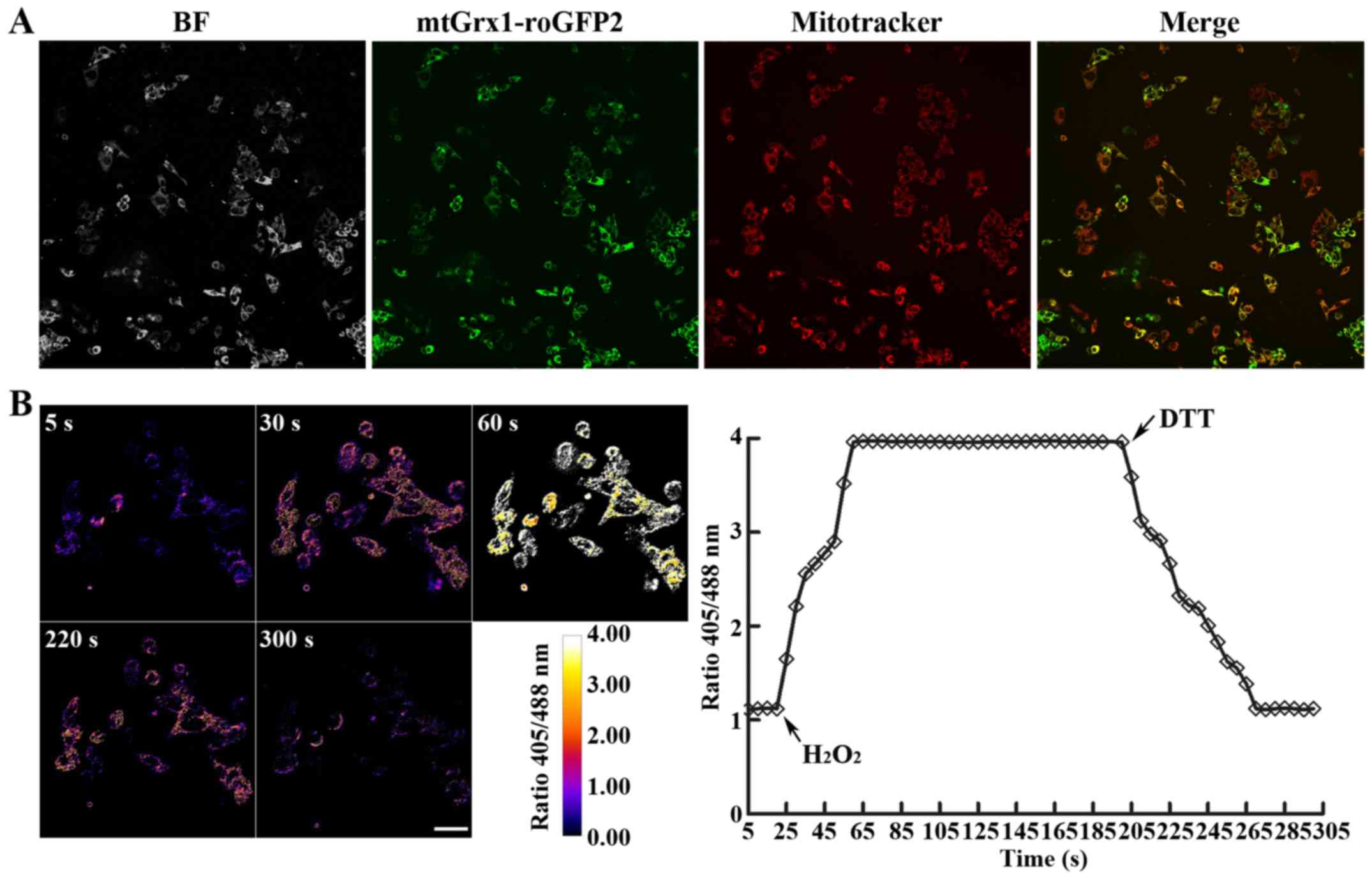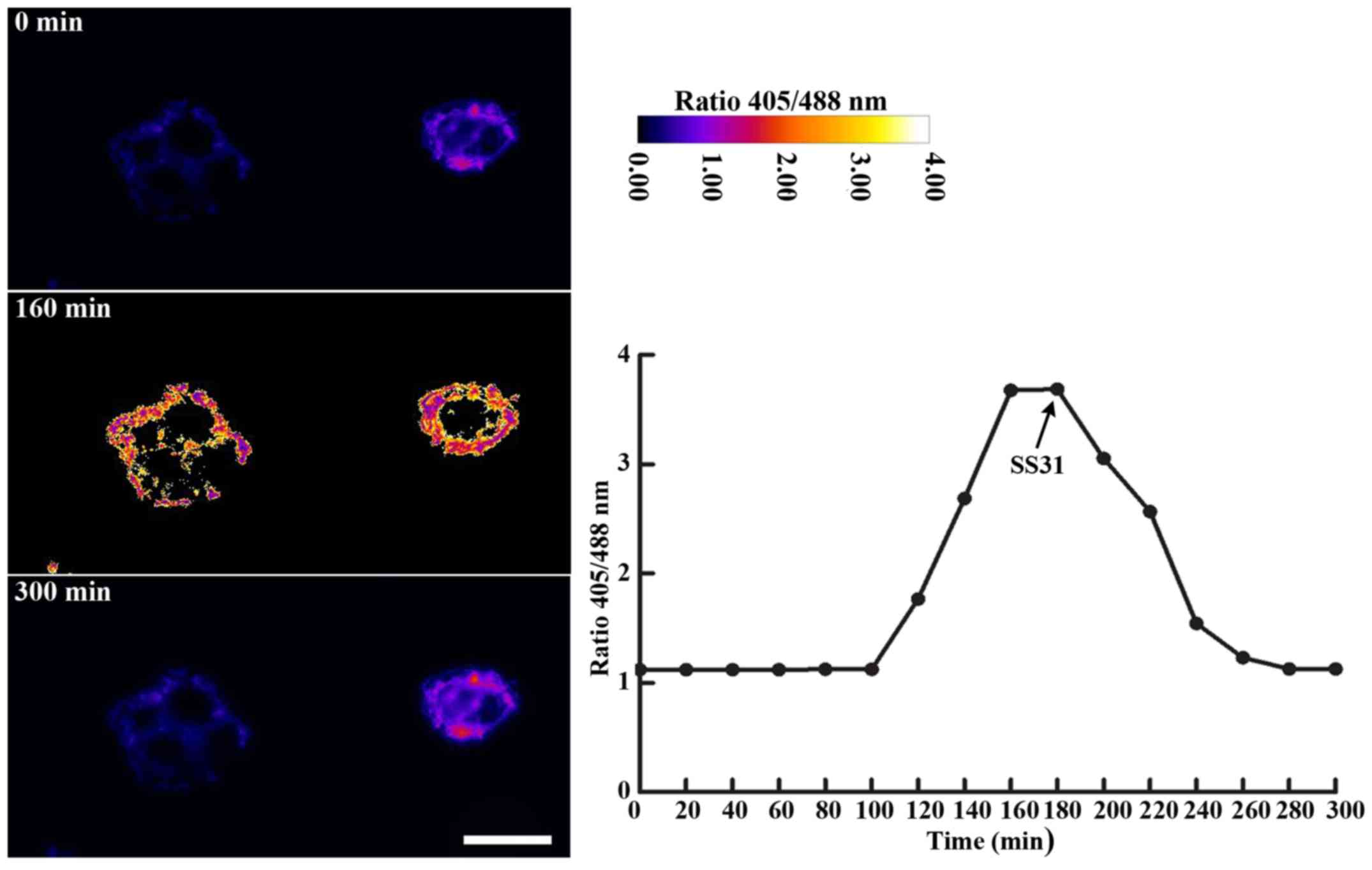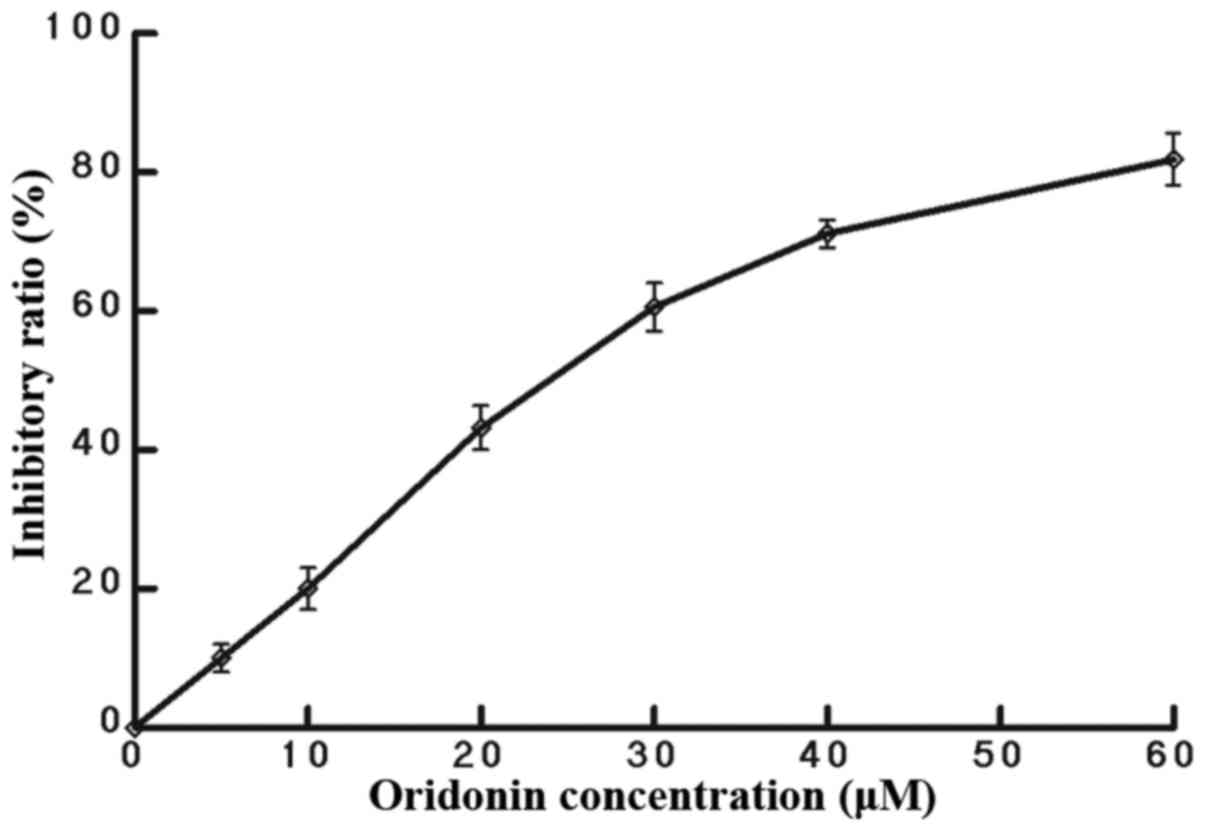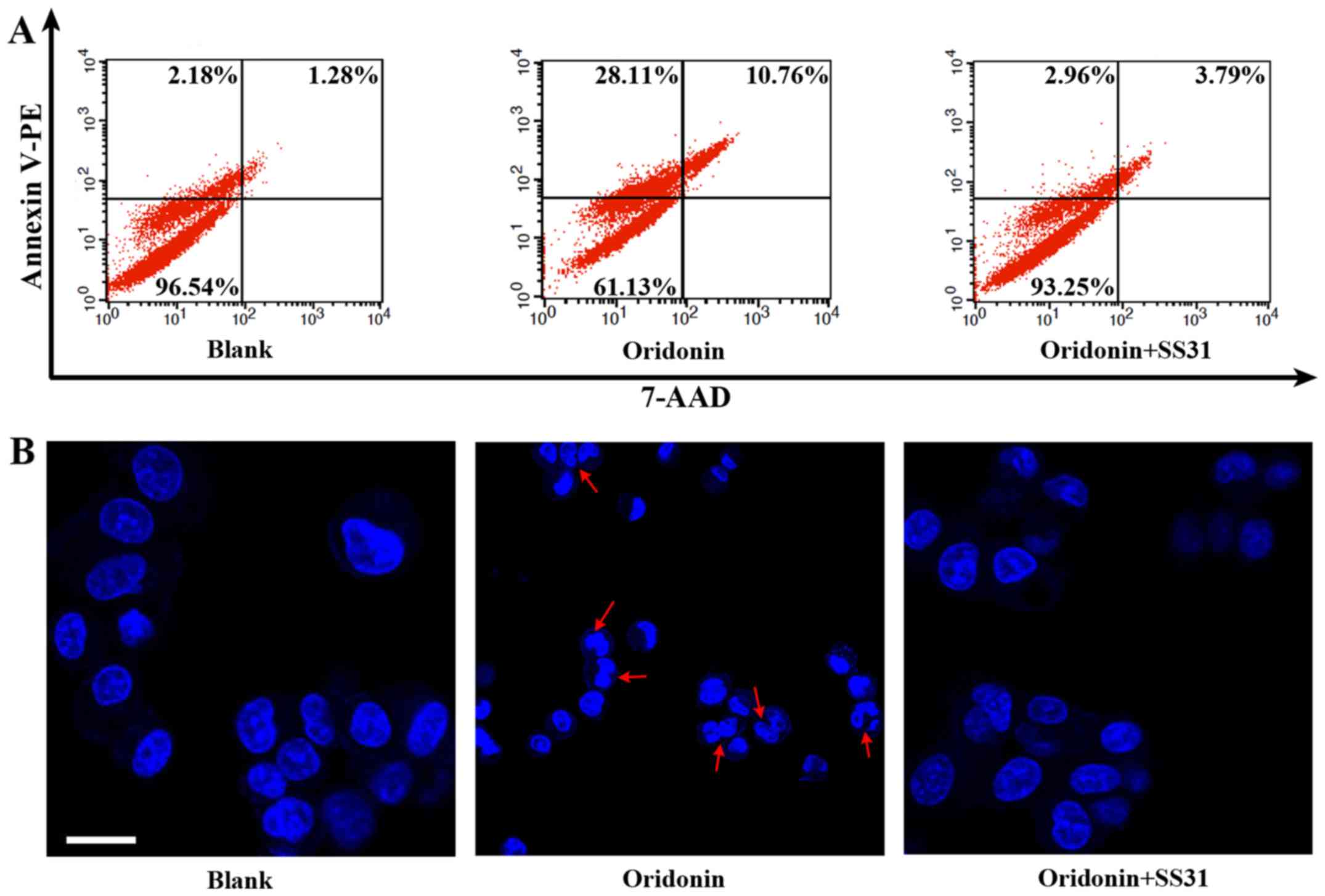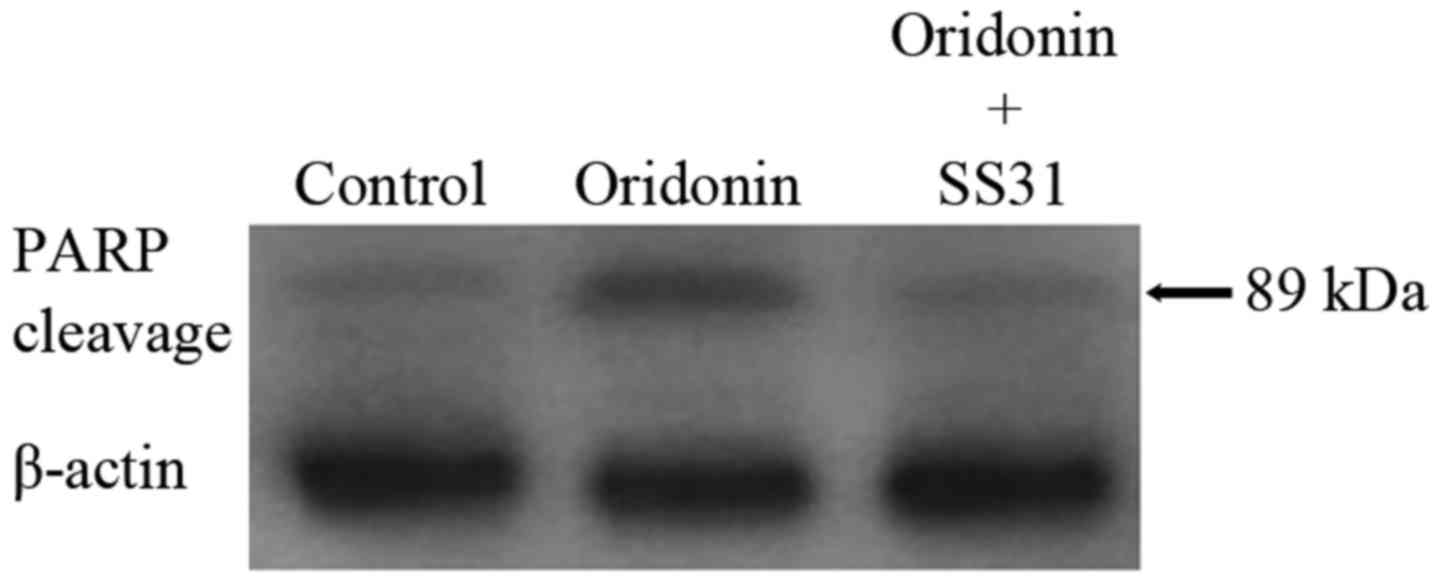|
1
|
Mohan H: Textbook of pathology. 5th.
Jaypee Brothers Medical Publishers; New Delhi: pp. 21–60. 2010,
View Article : Google Scholar
|
|
2
|
Merkle CJ: Cellular adaptation, injury and
deathPathophysiology: Concepts of altered health states. Porth CM
and Matfin G: 8th. Wolters Kluwer/Lippincott Williams and Wilkins;
Philadelphia, PA: pp. 94–111. 2009
|
|
3
|
Ghobrial IM, Witzig TE and Adjei AA:
Targeting apoptosis pathways in cancer therapy. CA Cancer J Clin.
55:178–194. 2005. View Article : Google Scholar : PubMed/NCBI
|
|
4
|
Wong RS: Apoptosis in cancer: From
pathogenesis to treatment. J Exp Clin Cancer Res. 30:872011.
View Article : Google Scholar : PubMed/NCBI
|
|
5
|
Parri M and Chiarugi P: Redox molecular
machines involved in tumor progression. Antioxid Redox Signal.
19:1828–1845. 2013. View Article : Google Scholar : PubMed/NCBI
|
|
6
|
Tochhawng L, Deng S, Pervaiz S and Yap CT:
Redox regulation of cancer cell migration and invasion.
Mitochondrion. 13:246–253. 2013. View Article : Google Scholar : PubMed/NCBI
|
|
7
|
Zhang L, Wang K, Lei Y, Li Q, Nice EC and
Huang C: Redox signaling: Potential arbitrator of autophagy and
apoptosis in therapeutic response. Free Radic Biol Med. 89:452–465.
2015. View Article : Google Scholar : PubMed/NCBI
|
|
8
|
Liao W, Yu Z, Lin Z, Lei Z, Ning Z,
Regenstein JM, Yang J and Ren J: Biofunctionalization of Selenium
nanoparticle with dictyophora indusiata polysaccharide and its
antiproliferative activity through death-receptor and
mitochondria-mediated apoptotic pathways. Sci Rep. 5:186292015.
View Article : Google Scholar : PubMed/NCBI
|
|
9
|
Xue M, Ge Y, Yu C, Zheng Z, He X and Zhao
J: Apoptosis is induced by docosahexaenoic acid in breast cancer
cells via death receptor and mitochondria-mediated pathways. Mol
Med Rep. 16:978–982. 2017. View Article : Google Scholar : PubMed/NCBI
|
|
10
|
Zhang YQ, Xiao CX, Lin BY, Shi Y, Liu YP,
Liu JJ, Guleng B and Ren JL: Silencing of pokemon enhances
caspase-dependent apoptosis via fas- and mitochondria-mediated
pathways in hepatocellular carcinoma cells. PLoS One. 8:e689812013.
View Article : Google Scholar : PubMed/NCBI
|
|
11
|
Kroemer G: Mitochondrial control of
apoptosis: An overview. Biochem Soc Symp. 66:1–15. 1999. View Article : Google Scholar : PubMed/NCBI
|
|
12
|
Mari M, Morales A, Colell A, Garcia-Ruiz C
and Fernandez-Checa JC: Mitochondrial glutathione, a key survival
antioxidant. Antioxid Redox Signal. 11:2685–2700. 2009. View Article : Google Scholar : PubMed/NCBI
|
|
13
|
Morgan B, Sobotta MC and Dick TP:
Measuring E(GSH) and H2O2 with roGFP2-based
redox probes. Free Radic Biol Med. 51:1943–1951. 2011. View Article : Google Scholar : PubMed/NCBI
|
|
14
|
Kolossov VL, Hanafin WP, Beaudoin JN, Bica
DE, DiLiberto SJ, Kenis PJ and Gaskins HR: Inhibition of
glutathione synthesis distinctly alters mitochondrial and cytosolic
redox poise. Exp Biol Med (Maywood). 239:394–403. 2014. View Article : Google Scholar : PubMed/NCBI
|
|
15
|
Chan CK, Supriady H, Goh BH and Kadir HA:
Elephantopus scaber induces apoptosis through ROS-dependent
mitochondrial signaling pathway in HCT116 human colorectal
carcinoma cells. J Ethnopharmacol. 168:291–304. 2015. View Article : Google Scholar : PubMed/NCBI
|
|
16
|
Shen S, Zhang Y, Zhang R and Gong X:
Sarsasapogenin induces apoptosis via the reactive oxygen
species-mediated mitochondrial pathway and ER stress pathway in
HeLa cells. Biochem Biophys Res Commun. 15:519–524. 2013.
View Article : Google Scholar
|
|
17
|
Ezerina D, Morgan B and Dick TP: Imaging
dynamic redox processes with genetically encoded probes. J Mol Cell
Cardiol. 73:43–49. 2014. View Article : Google Scholar : PubMed/NCBI
|
|
18
|
Bhaskar A, Munshi M, Khan SZ, Fatima S,
Arya R, Jameel S and Singh A: Measuring glutathione redox potential
of HIV-1-infected macrophages. J Biol Chem. 290:1020–1038. 2015.
View Article : Google Scholar : PubMed/NCBI
|
|
19
|
van Lith M, Tiwari S, Pediani J, Milligan
G and Bulleid NJ: Real-time monitoring of redox changes in the
mammalian endoplasmic reticulum. J Cell Sci. 124:2349–2356. 2011.
View Article : Google Scholar : PubMed/NCBI
|
|
20
|
Hanson GT, Aggeler R, Oglesbee D, Cannon
M, Capaldi RA, Tsien RY and Remington SJ: Investigating
mitochondrial redox potential with redox-sensitive green
fluorescent protein indicators. J Biol Chem. 279:13044–13053. 2004.
View Article : Google Scholar : PubMed/NCBI
|
|
21
|
Gutscher M, Pauleau AL, Marty L, Brach T,
Wabnitz GH, Samstag Y, Meyer AJ and Dick TP: Real-time imaging of
the intracellular glutathione redox potential. Nat Methods.
5:553–559. 2008. View Article : Google Scholar : PubMed/NCBI
|
|
22
|
Kang N, Zhang JH, Qiu F, Tashiro S,
Onodera S and Ikejima T: Inhibition of EGFR signaling augments
oridonin-induced apoptosis in human laryngeal cancer cells via
enhancing oxidative stress coincident with activation of both the
intrinsic and extrinsic apoptotic pathways. Cancer Lett.
294:147–158. 2010. View Article : Google Scholar : PubMed/NCBI
|
|
23
|
Zhang YH, Wu YL, Tashiro S, Onodera S and
Ikejima T: Reactive oxygen species contribute to oridonin-induced
apoptosis and autophagy in human cervical carcinoma HeLa cells.
Acta Pharmacol Sin. 32:1266–1275. 2011. View Article : Google Scholar : PubMed/NCBI
|
|
24
|
Chen G, Wang K, Yang BY, Tang B, Chen JX
and Hua ZC: Synergistic antitumor activity of oridonin and arsenic
trioxide on hepatocellular carcinoma cells. Int J Oncol.
40:139–147. 2012.PubMed/NCBI
|
|
25
|
Wang H, Ye Y and Yu ZL: Proteomic and
functional analyses demonstrate the involvement of oxidative stress
in the anticancer activities of oridonin in HepG2 cells. Oncol Rep.
31:2165–2172. 2014. View Article : Google Scholar : PubMed/NCBI
|
|
26
|
Yu Y, Fan SM, Ye YC, Tashiro S, Onodera S
and Ikejima T: The tyrphostin AG1478 augments oridonin-induced A431
cell apoptosis by blockage of JNK MAPK and enhancement of oxidative
stress. Free Radic Res. 46:1393–1405. 2012. View Article : Google Scholar : PubMed/NCBI
|
|
27
|
Yu Y, Fan SM, Song JK, Tashiro S, Onodera
S and Ikejima T: Hydroxyl radical (OH) played a pivotal role in
oridonin-induced apoptosis and autophagy in human epidermoid
carcinoma A431 cells. Biol Pharm Bull. 35:2148–2159. 2012.
View Article : Google Scholar : PubMed/NCBI
|
|
28
|
Zang L, He H, Xu Q, Yu Y, Zheng N, Liu W,
Hayashi T, Tashiro S, Onodera S and Ikejima T: Reactive oxygen
species H2O2 and •OH, but not
O2•(−) promote oridonin-induced phagocytosis of
apoptotic cells by human histocytic lymphoma U937 cells. Int
Immunopharmacol. 15:414–423. 2013. View Article : Google Scholar : PubMed/NCBI
|
|
29
|
Pi J, Cai H, Jin H, Yang F, Jiang J, Wu A,
Zhu H, Liu J, Su X, Yang P and Cai J: Qualitative and quantitative
analysis of ROS-mediated oridonin-induced oesophageal cancer
KYSE-150 cell apoptosis by atomic force microscopy. PLoS One.
10:e01409352015. View Article : Google Scholar : PubMed/NCBI
|
|
30
|
Shang CH, Zhang QQ and Zhou JH: Oridonin
inhibits cell proliferation and induces apoptosis in rheumatoid
arthritis fibroblast-like Synoviocytes. Inflammation. 39:873–880.
2016. View Article : Google Scholar : PubMed/NCBI
|
|
31
|
Xu ZZ, Fu WB, Jin Z, Guo P, Wang WF and Li
JM: Reactive oxygen species mediate oridonin-induced apoptosis
through DNA damage response and activation of JNK pathway in
diffuse large B cell lymphoma. Leuk Lymphoma. 57:888–898. 2016.
View Article : Google Scholar : PubMed/NCBI
|
|
32
|
Huang J, Wu L, Tashiro S, Onodera S and
Ikejima T: Reactive oxygen species mediate oridonin-induced HepG2
apoptosis through p53, MAPK and mitochondrial signaling pathways. J
Pharmacol Sci. 107:370–379. 2008. View Article : Google Scholar : PubMed/NCBI
|
|
33
|
Bao R, Shu Y, Wu X, Weng H, Ding Q, Cao Y,
Li M, Mu J, Wu W, Ding Q, et al: Oridonin induces apoptosis and
cell cycle arrest of gallbladder cancer cells via the mitochondrial
pathway. BMC Cancer. 14:2172014. View Article : Google Scholar : PubMed/NCBI
|
|
34
|
Li J, Chen X, Xiao W, Ma W, Li T, Huang J,
Liu X, Liang X, Tang S and Luo Y: Mitochondria-targeted antioxidant
peptide SS31 attenuates high glucose-induced injury on human
retinal endothelial cells. Biochem Biophys Res Commun. 404:349–356.
2011. View Article : Google Scholar : PubMed/NCBI
|
|
35
|
Zhao K, Zhao GM, Wu D, Soong Y, Birk AV,
Schiller PW and Szeto HH: Cell-permeable peptide antioxidants
targeted to inner mitochondrial membrane inhibit mitochondrial
swelling, oxidative cell death and reperfusion injury. J Biol Chem.
279:34682–34690. 2004. View Article : Google Scholar : PubMed/NCBI
|
|
36
|
Zhao K, Luo G, Giannelli S and Szeto HH:
Mitochondria-targeted peptide prevents mitochondrial depolarization
and apoptosis induced by tert-butyl hydroperoxide in neuronal cell
lines. Biochem Pharmacol. 70:1796–1806. 2005. View Article : Google Scholar : PubMed/NCBI
|
|
37
|
López-Terrada D, Cheung SW, Finegold MJ
and Knowles BB: Hep G2 is a hepatoblastoma-derived cell line. Hum
Pathol. 40:1512–1515. 2009. View Article : Google Scholar
|
|
38
|
Capes-Davis A, Theodosopoulos G, Atkin I,
Drexler HG, Kohara A, MacLeod RA, Masters JR, Nakamura Y, Reid YA,
Reddel RR and Freshney RI: Check your cultures! A list of
cross-contaminated or misidentified cell lines. Int J Cancer.
127:1–8. 2010. View Article : Google Scholar : PubMed/NCBI
|
|
39
|
Zufferey R, Nagy D, Mandel RJ, Naldini L
and Trono D: Multiply attenuated lentiviral vector achieves
efficient gene delivery in vivo. Nat Biotechnol. 15:871–875. 1997.
View Article : Google Scholar : PubMed/NCBI
|
|
40
|
Rota C, Chignell CF and Mason RP: Evidence
for free radical formation during the oxidation of
2′-7′-dichlorofluorescin to the fluorescent dye
2′-7′-dichlorofluorescein by horseradish peroxidase: Possible
implications for oxidative stress measurements. Free Radic Biol
Med. 27:873–881. 1999. View Article : Google Scholar : PubMed/NCBI
|
|
41
|
Loor G, Kondapalli J, Schriewer JM,
Chandel NS, Vanden Hoek TL and Schumacker PT: Menadione triggers
cell death through ROS-dependent mechanisms involving PARP
activation without requiring apoptosis. Free Radic Biol Med.
49:1925–1936. 2010. View Article : Google Scholar : PubMed/NCBI
|
|
42
|
Ye W, Zhong Z, Zhu S, Zheng S, Xiao J,
Song S, Yu H, Wu Q, Lin Z and Chen J: Advanced oxidation protein
products induce chondrocyte death through a redox-dependent, poly
(ADP-ribose) polymerase-1-mediated pathway. Apoptosis. 22:86–97.
2017. View Article : Google Scholar : PubMed/NCBI
|
|
43
|
Lu P, Kamboj A, Gibson SB and Anderson CM:
Poly(ADP-ribose) polymerase-1 causes mitochondrial damage and
neuron death mediated by Bnip3. J Neurosci. 34:15975–15987. 2014.
View Article : Google Scholar : PubMed/NCBI
|
|
44
|
Li CY, Wang EQ, Cheng Y and Bao JK:
Oridonin: An active diterpenoid targeting cell cycle arrest,
apoptotic and autophagic pathways for cancer therapeutics. Int J
Biochem Cell Biol. 43:701–704. 2011. View Article : Google Scholar : PubMed/NCBI
|
|
45
|
Ikezoe T, Chen SS, Tong XJ, Heber D,
Taguchi H and Koeffler HP: Oridonin induces growth inhibition and
apoptosis of a variety of human cancer cells. Int J Oncol.
23:1187–1193. 2003.PubMed/NCBI
|
|
46
|
Schwarzlander M, Fricker MD and Sweetlove
LJ: Monitoring the in vivo redox state of plant mitochondria:
effect of respiratory inhibitors, abiotic stress and assessment of
recovery from oxidative challenge. Biochim Biophys Acta.
1787:468–475. 2009. View Article : Google Scholar : PubMed/NCBI
|
|
47
|
Albrecht SC, Sobotta MC, Bausewein D,
Aller I, Hell R, Dick TP and Meyer AJ: Redesign of genetically
encoded biosensors for monitoring mitochondrial redox status in a
broad range of model eukaryotes. J Biomol Screen. 19:379–386. 2014.
View Article : Google Scholar : PubMed/NCBI
|
|
48
|
Johnson TM, Yu ZX, Ferrans VJ, Lowenstein
RA and Finkel T: Reactive oxygen species are downstream mediators
of p53-dependent apoptosis. Proc Natl Acad Sci USA. 93:pp.
11848–11852. 1996; View Article : Google Scholar : PubMed/NCBI
|
|
49
|
Wang H, Ye Y, Chui JH, Zhu GY, Li YW, Fong
DW and Yu ZL: Oridonin induces G2/M cell cycle arrest and apoptosis
through MAPK and p53 signaling pathways in HepG2 cells. Oncol Rep.
24:647–651. 2010.PubMed/NCBI
|
|
50
|
Wang H, Ye Y, Chu JH, Zhu GY, Fong WF and
Yu ZL: Proteomic and functional analyses reveal the potential
involvement of endoplasmic reticulum stress and alpha-CP1 in the
anticancer activities of oridonin in HepG2 cells. Integr Cancer
Ther. 10:160–167. 2011. View Article : Google Scholar : PubMed/NCBI
|



